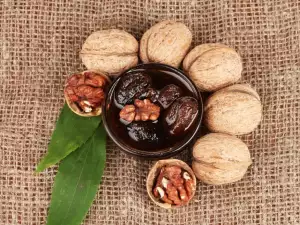Melanin is a general term for a group of pigments that provide a brown, dark or black color in plants, animals and people. This pigment is responsible for our characteristic skin color and hair color. It settles in our hair, irises of the eyes and some areas of the nervous system.
Melanin is formed by two amino acids - phenylalanine and tyrosine. These in turn are produced by a special group of cells known as melanocytes.
These cells can contribute to the curing of diseases such as vitiligo and albinism, which are characterized by the lack or complete absence of melanocytes. Melanin is virtually absent in the palms and soles.
Melanocytes can be found everywhere in the body. They are located in the base of the skin, eye color, form the hue of our hair. People think that hair and skin have a wide range of colors, but medically speaking, based on the type of melanin, melanocytes are divided into two main groups.
The first is responsible for black and dark brown shades, the second - for the nuances of red to yellow. Their ratio in the cells determines the hair color of an individual.

It is not yet fully understood how melanocytes merge to obtain hair color, but what is known is that genetic factors can be tracked.
Over the years, hair greys and finally whitens because at a certain age, hair follicles stop producing melanin. This means that if the hair contains more melanin, its color will be darker, and if it contains less - lighter.
In the process of aging, pigment cells in the hair follicles begin to produce reduced quantities of melanin, which leads to loss of hair color and greying. Over the years, the body stops producing new melanocytic cells to replace the dying ones and the result is complete whitening of the hair.
Overproduction of melanin
Hormonal changes, exposure to sunlight, injury, some diseases, genetic predisposition may lead to overproduction of melanin. Increased production and deposition of melanin causes hyperpigmentation of the skin that is either extensive or localized.
Hyperpigmentation occurs in flat and darker areas of the skin and have a different shape and size. They range from dark brown to black spots. Treatment of pigmentation depends on whether it is dermal or epidermal.

Shortage of melanin
If there is a shortage of melanin in the body, the skin is put at risk. It is possible to develop diseases such as vitiligo and albinism. Vitiligo is a skin disease in which bright spots appear on the skin.
It is thought that in vitiligo, the body's own immune system attacks the melanocytes in the skin that die or fail to function properly, resulting in the disappearance of melanin.
Albinism is an inherited disease that affects the eyes as well as the skin. It is caused by the disturbance in the production of melanin in the skin.
Melanin and tanning
In the summer, many people take seaside vacations to acquire a nice summer tan. Our suntan depends on melanin - the more melanin, the faster the skin tans.
The body's ability to produce melanin is genetically determined, but it is possible to influence its production. This is done by eating more foods that support the production of melanin. Emphasis should be placed on products that are rich in vitamins C, E and A.
As mentioned, melanin is synthesized using the amino acids tryptophan and tyrosine. Tyrosine is present in products of animal origin in larger quantities - meat, fish, different types of liver, but also beans and avocados.
Tryptophan is contained in unvarnished rice and dates. Peanuts and bananas contain both amino acids.
















Comments